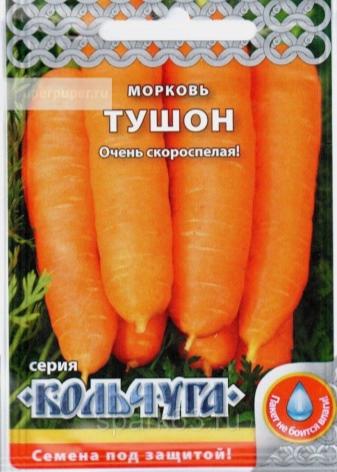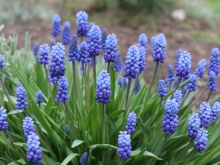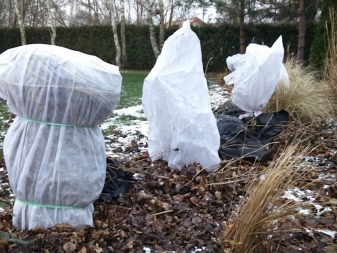What to plant in the country in the fall?

True summer residents do not miss the opportunity to get crops from their garden all year round. If you are interested in how to do this and what to plant before winter, in the article you will find the answer not only for vegetables, but also for flowers, trees and shrubs that are not afraid of the cold.


Vegetable overview
Before winter, experienced gardeners often sow or plant vegetables and greens on their plot in order to get a harvest in the spring or early summer. So, Let us dwell in detail on the late planting of crops that can be sown in the country in the fall: in September, October, November.
Carrot
Carrots are sown about one and a half to two weeks before frost appears, and then you need to intuitively feel this moment or trust the forecasters and pay attention to their long-term forecast. If this happens earlier, there is a risk that the seeds will have time to germinate and die due to temperature changes.
Due to winter, there will be a loss of seeds anyway, so tune in to throw them into the ground 20% more than the usual spring planting. As soon as the outside temperature stays at the level of 2-3 degrees Celsius for several days, start sowing carrot seeds to a depth of 2-3 cm with a row spacing of at least 20 centimeters.
Humus and organic matter (manure) are not added to the beds. If earlier a lot of organic matter and nitrogen were introduced here, then most likely you will get low-quality fruits, even if you take good varieties for autumn planting.

Carrots love humus and grow well in areas where you have previously harvested early potatoes, cabbage, cucumbers, tomatoes. Before winter, you can sow the following varieties:
- "Vitamin";
- "Kuroda";
- "Samson";
- "Incomparable";
- Flakke;
- "Tuchon".


It is advisable to plow the soil deeply before planting carrots, the culture loves looseness, with dense black soil it will not hurt to add sand.
Garlic
But it is better to plant garlic for the winter one and a half months before severe cold weather. In different regions it will be the second half of September or October. You need to choose the largest cloves possible, since the harvest will depend on the seed material: the larger the garlic you put in the ground, the heavier you will get the bulbs.
It is necessary to divide the garlic into teeth only on the day of planting, you do not need to do this in advance. The planting depth should be 4-6 cm.Plant the cloves at a distance of 12-15 centimeters from each other, and keep a distance of 20 cm in the row spacing.It is recommended to mulch the garlic planting by 5 cm, for this peat or humus is harvested, and in early spring this layer shoot and let the sprouts "come out".


Many, who are planting winter garlic for the first time, regret planting material and do not choose the best garlic bulbs. This is erroneous, although it is allowed to grow this crop before winter and air bulbs that form on the arrows of garlic.
Such bulbs can be used for planting for the winter, but be prepared for the fact that you will not get a good harvest right away. In the best case, it will be one prong weighing no more than 8 grams. If this one-toothed onion is planted again in the fall, then by next summer you can get a full harvest of garlic with large white-toothed onions.
The autumn planting of garlic is not watered, the culture has enough natural precipitation to gain strength and take root, and in the spring to grow. But if the winter is going to be harsh, it is advisable to wrap up the garlic beds, elementarily this can be done with the help of fallen leaves.

Salad
The salad is sown right before winter, so if the fall has dragged on, then this can be done even in the second half of November. There are special late varieties for this, for example, buy the seeds of "Large cabbage", "Emerald" or "Berlin yellow" salad. Suitable for autumn planting and mid-season varieties.
In a warm greenhouse, you can grow salads all year round (watercress, leafy and head varieties), here you can sow any kind, the growing season does not matter: early, late, middle. The Darnitsa variety has proven itself well in greenhouse conditions.
That in the greenhouse, that in the open ground, the seeds are planted with a continuous ribbon, and when shoots appear, they are thinned out.

Potato
If you are an inexperienced gardener, but are capable of experiments, then do not waste a lot of potato seed material for laying it in the ground before winter for the first time. The fact is that growing potatoes with planting before winter requires personal experience and certain skills, so do not risk it the first time.
Prepare thoroughly for the autumn planting of potatoes and do the following:
- for a potato plantation, choose a place where the wind does not blow so often, and where moisture does not stagnate;
- 2 weeks before planting, place the seed in the sun - this way you will save the tubers from pests;
- if greenish potatoes are found, they should be soaked in a fungicide solution;
- in each hole (depth 10 cm) when planting, throw 2 tubers and ash (about 1 glass);
- Cover the potato beds with straw or a layer of peat - this will help with temperature changes.


If everything is done correctly, and the seeds will sprout in early spring, then 30 days later you will get a harvest. And then, on trial and error, increase the plantations and get more early harvest due to planting before winter.
What flowers to plant?
Bulbous plants are especially suitable for autumn planting of flowers:
- narcissus;
- different types of tulips;
- various varieties of crocuses;
- Pushkinia;
- peonies;
- varieties of irises;
- phlox;
- muscari.



From medicinal plants that simultaneously delight the eye with their flowers, you can plant valerian, oregano, lemon balm, chamomile, succession, elecampane, clary sage, echinacea, lavender, bathing suit in the fall.
To prevent the bulbs of these flowers from dying in the ground, they must be planted 30 days before frost. In different regions it will be the end of September - the end of October. But at the beginning of autumn, you can start planting irises, peonies and phlox, in two weeks you can plant chamomile, lavender near them, rudbeckia and carnations will feel good in such a company.
Lilies from the autumn planting will also take root, only they are planted directly with the first frost, covering with something on top.
Before the onset of severe cold weather near flowers planted in the fall, it does not interfere with digging up the soil and applying fertilizer.


List of trees and shrubs
For planting in the fall, only those fruit trees and berry bushes that are sold in containers are suitable (their root system is closed with a large clod of earth). If you see seedlings with cut roots, then know that such will take root only in the spring. What can be planted in autumn:
- currant bushes;
- raspberry cuttings;
- gooseberry bushes;
- barberry;
- juniper;
- apple trees;
- pears;
- apricot;
- plum;
- thuyu;
- spruce;
- other fruit and berry and coniferous trees and shrubs.


Pay attention to this feature: trees and bushes for autumn planting must correspond to the season, that is, be withered, with yellowed foliage - this does not frighten the path. On the contrary, be wary if you purchased green plants with lush foliage for autumn planting that do not have autumn signs - this means that they have not completed their growing season, and they will simply die in winter.
Trees and shrubs are planted in autumn in the last decade of September, in early October, or even later - it depends on the climatic characteristics of each region. The best landmark is two to three weeks before the frost comes.It is better to dig holes in advance.
Before planting, it is better to wrap the trunks with a plastic net or nylon stockings - this will save the trees from rodents, which at this time are very active in search of food.
Make sure that the soil under the planted seedlings does not dry out until frosts come, and insulate the fragile trees and shrubs for the winter.


In harsh climatic conditions, such "wells" are made around the seedlings: pegs are driven around the trunk at a distance of about 30-40 cm and tightened with burlap or film, and sawdust or foliage are thrown into the formed "well". Thus, they create heating for the seedlings.
You can wrap young shrubs and trees in snow when it falls, but it's better to tamp it - this will protect against rodents, in the fluffy snow they make their way to the "prey", but they are unlikely to dig the packed snow.















The comment was sent successfully.